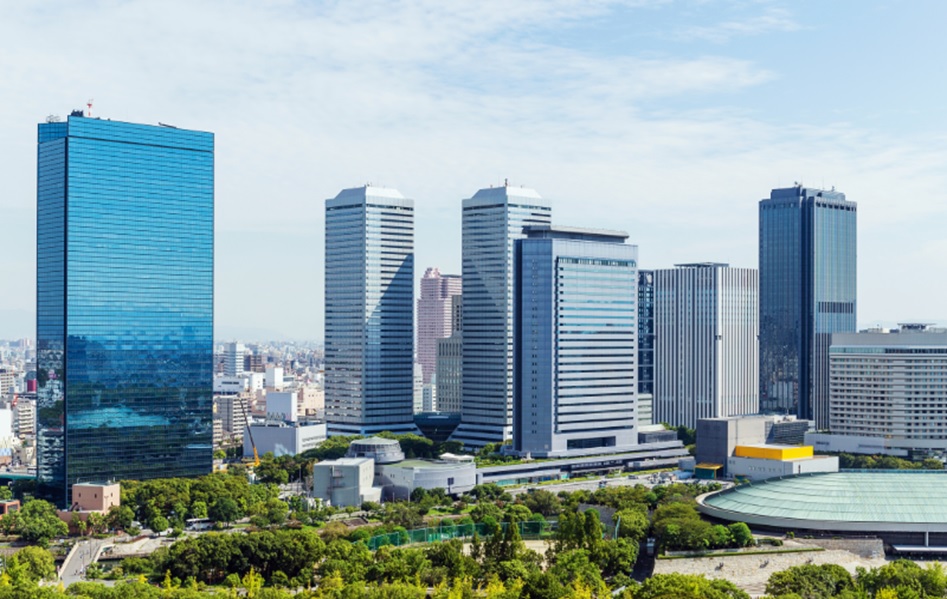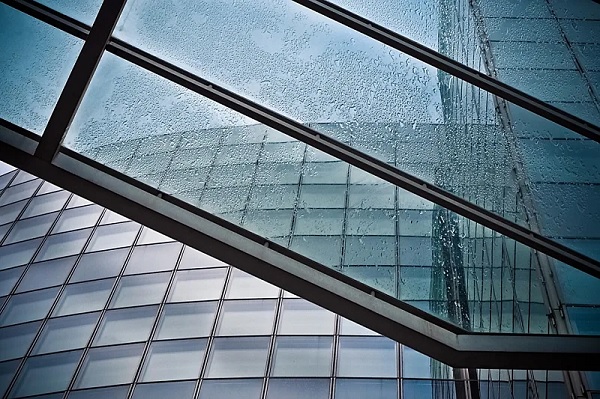
Weather is one of the significant hazards to the integrity of structures of commercial building management. Did you know that wind-borne rain is one of the most pervasive and destructive forces and it can infiltrate even the most robust buildings? Wind-driven rain is a strong wind propelling rainwater directly onto a building’s façade, frequently at sharp angles, forcing it into places where it can wreak havoc. We will help you understand the effects of this phenomenon and how to mitigate them to ensure safety and life expectancy for commercial properties!
Gradual Structural Degradation
Wind-borne rain can cause gradual but intense damage to the structural elements of a commercial building. In particular, the water should be wind-driven into tiny openings, cracks, or joints before being allowed to infiltrate into the building materials and start the processes that lead to deterioration in concrete, bricks, and steel. Over some time, this penetration of water can weaken the structural integrity of the building, resulting in a weakened wall, corroded steel framework, and damaged foundations. Such degradation may not only be life-threatening but also detrimental to the repair and maintenance costs of the building. Incorporating Wind Driven Rain Simulation during the design process will better prepare architects and engineers for such eventualities and in designing buildings that can better withstand such weather events.
Increased Wear and Tear on Building Façades
The unabated pounding of wind-borne rain might project added wear and tear on the building façade, affecting its appearance and working system. Over time, the constant bombardment may cause paint to peel, bricks to crumble, and metal components to corrode. It alters the building’s appearance negatively and exposes the walls for further damage. Periodic inspections, repairs, and protective coatings become important exterior facade maintenance to extend a building’s exterior life and make it look appealing to the eye. The concepts of proper fire safety design principles also consider, in addition to pass-through protection, durability, which relates to the degradation of materials due to environmental stresses.
Interior Water Damage and Mould Growth
One result of wind-driven rain is interior water intrusion on buildings that are not sealed. Once the outer layer is affected, the water can easily infiltrate the interior spaces and wet the ceilings, walls, and floors. If unmitigated, moisture from such accumulation may eventually lead to mould and mildew, which is associated with health hazards to the occupants and expensive remediation efforts. Mould can grow on damp surfaces and spread fast across the building, causing respiratory problems and other diseases. Fire safety management must involve the periodic inspection of the exterior of the building to prevent water infiltration and ensure that the indoor environment is safe.

Electrical System Failures
Water and electricity are a dangerous combination whereby infiltration of wind-driven rain can cause electrical system failure when it penetrates a building’s infrastructure. If water seeps into electrical panels, wiring, and outlets, short circuits, blackouts, or even fires could be caused. It becomes a concern of commercial buildings with complex electrical systems to run operations. There might be exposure of the electrical systems to possible water entry that should be protected by ensuring that all envelope penetrations of the building are sealed and electrical elements are kept away from vulnerable areas. Consultation with a fire protection engineer will identify and mitigate these hazards and guarantee the safe operation of all electrical systems in the building.
Insulation and Energy Efficiency Can Be Compromised
One of the less obvious yet important implications of wind-driven rain is that it can have a building’s insulation compromised. The water will seep through walls and the roof and may drench insulation materials, rendering them less effective. Wet insulation does not have temperature regulation, so the energy use increases due to increased heating and cooling system loads trying to achieve a comfortable indoor environment. It increases operational expenditures and puts an additional load on the building’s energy systems. The building envelope should be well-sealed and the materials used should have low moisture penetration to avoid this.
Impact on Fire Safety Systems
Therefore, wind-borne rain can further affect the installed fire safety systems in a building by rendering them less effective. For instance, water intrusion can damage fire alarms and sprinkler systems, among other critical components vital to effective response in an emergency. Water may also accumulate at locations where this would result in slipping, hindering any evacuation! Fire safety design allows for potential water damage essential to these systems’ integrity. Periodic testing and maintenance of fire safety systems within a holistic fire safety management plan should allow for the identification and rectification of such vulnerabilities before they mature into catastrophic failures.
Drawing on the effects mentioned above, property owners and building managers can be proactive about safeguarding their property and helping to keep occupants safe. A simulation of wind-driven rain in the design phase, periodic maintenance, and experts in fire protection and safety will lessen the risks herein, expanding the service life of the building.
For professional advice on how to protect your commercial building from wind-borne rain and other environmental elements, look no further and contact SHEVS IFT Consultants today!




